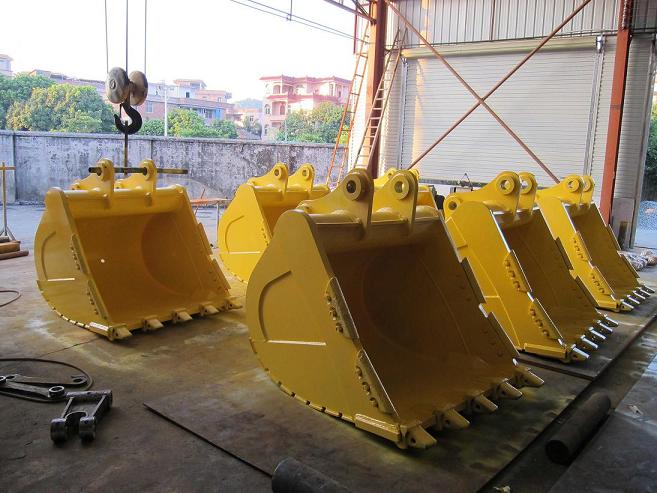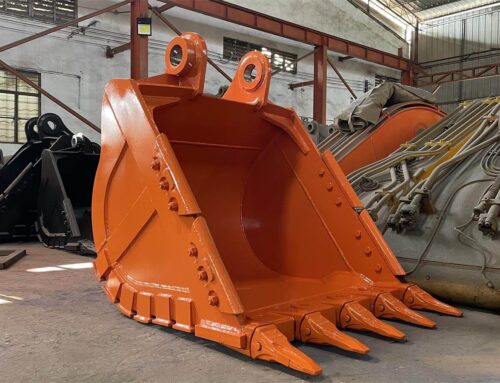Excavators are powerful machines that play a pivotal role in construction, mining, and other heavy-duty industries. The excavator bucket, an essential component, serves as the “workhorse” responsible for digging, scooping, and lifting materials. Over time, due to wear and tear, replacement becomes necessary to maintain optimal performance. However, selecting the right excavator bucket involves more than just a simple swap. In this popular science article, we will explore the crucial factors to consider when excavator bucket replacement, ensuring improved productivity, efficiency, and cost-effectiveness.
-
Matching the Task:
The first step in excavator bucket replacement is understanding the specific requirements of the job at hand. Excavators are used in a wide range of applications, from general earthmoving to specialized tasks like trenching, demolition, and rock breaking. Each task demands a unique bucket design to maximize efficiency and minimize wear. Consider the following factors:
- Bucket Type: Different bucket types, such as general-purpose, rock, ditch cleaning, or trenching buckets, are optimized for specific tasks. Choosing the appropriate bucket type ensures optimal performance and extends the machine’s lifespan.
- Bucket Size: Selecting the right bucket size is crucial to achieve the desired productivity. A larger bucket may increase the efficiency of moving materials, while a smaller one allows for more precision in confined spaces.
- Teeth and Cutting Edges: Matching the type and configuration of teeth and cutting edges to the application is vital. Options include standard teeth for general tasks, rock teeth for challenging terrains, and specialized edges for improved digging or grading.
-
Material Selection:
The material used in the construction of the excavator bucket significantly impacts its durability, strength, and resistance to wear. The choice of material depends on the anticipated operating conditions, such as the type of soil or rock encountered. Consider the following materials:
- Carbon Steel: Affordable and commonly used, carbon steel buckets are suitable for general-purpose applications with low to moderate impact forces. However, they may be more prone to wear in abrasive environments.
- Hardened Steel: Heat-treated and hardened steel buckets offer increased strength and wear resistance, making them ideal for tasks involving abrasive materials, rocks, or concrete.
- Stainless Steel: Stainless steel buckets provide excellent corrosion resistance, making them suitable for applications in wet or corrosive environments. However, they may sacrifice some strength compared to other materials.
- Composite Materials: Composite buckets, made of reinforced polymers or composites, offer a lightweight alternative that minimizes machine stress and fuel consumption. They are ideal for applications where weight reduction is crucial.
-
Bucket Attachment Mechanism:
Proper attachment of the bucket to the excavator is crucial for efficient operation and safety. Consider the following aspects when selecting the attachment mechanism:
- Quick Coupler Systems: Implementing a quick coupler system enables rapid bucket changes, enhancing job site productivity. Ensure compatibility between the coupler and the new bucket, adhering to safety standards.
- Pin-on Couplers: These conventional couplers require manual installation and removal. While they may be slower, they are often more robust and can handle heavier loads, making them suitable for demanding applications.
- Hydraulic Couplers: Hydraulic couplers provide the ability to change buckets without leaving the operator’s cab. This feature enhances safety and reduces downtime, particularly in hazardous or time-sensitive environments.
Conclusion:
Replacing an excavator bucket is a significant decision that can greatly impact machine performance, productivity, and longevity. By considering factors such as task requirements, material selection, and bucket attachment mechanisms, operators can make informed decisions to optimize their excavator’s performance. Choosing the right bucket type and size based on the task at hand ensures efficient material handling and improved productivity.
The material selection is crucial to ensure durability and resistance to wear. Carbon steel buckets are a cost-effective option for general-purpose applications, while hardened steel buckets offer increased strength and wear resistance for more challenging environments. Stainless steel buckets are suitable for corrosive conditions, and composite materials provide lightweight alternatives for reducing machine stress and fuel consumption.
Equally important is the attachment mechanism used to secure the bucket to the excavator. Quick coupler systems enable swift bucket changes, enhancing job site productivity and efficiency. Pin-on couplers, although slower to install, offer robustness and can handle heavier loads, making them suitable for demanding tasks. Hydraulic couplers provide the convenience of changing buckets from the operator’s cab, improving safety and reducing downtime in hazardous or time-sensitive environments.
Regular maintenance and inspection of the excavator bucket, including checking for wear, damage, and proper alignment, are essential for optimal performance. Timely replacement of worn-out teeth and cutting edges helps maintain efficient digging and reduces unnecessary stress on the bucket and excavator.
In conclusion, replacing an excavator bucket requires careful consideration of various factors, including task requirements, material selection, and attachment mechanisms. By understanding these key considerations and making informed choices, operators can ensure improved productivity, efficiency, and cost-effectiveness while maximizing the lifespan of their excavator and optimizing performance on the job site.









Leave A Comment